
INTERESTING IRON
White 195: The Dark Horse
Ryan Roossinck
September 26, 2024

I’ve heard it said that the White 195 Workhorse was the most iconic tractor to ever wear the White badge. I’m not 100% sure if I agree with that statement or not; White built a lot of pretty tough machines over the years. However, I’ll say this, and I’ll stand firm on it. The 195 was one of the Top 10 row-crop tractors to come from the 1990s (which I believe was the best era for tractors in modern history). That tractor punched way above its weight class. It was a dark horse for sure.
If you need further proof…go try to find one for sale on the internet a month or two from now. I doubt you’ll find one.
However, there’s one that just landed at Melchert Harvesting Equipment’s lot in southern Minnesota – and boy, this one is a bruiser. Here’s the link to 195s listed on Tractor Zoom right now (you might want to bookmark this one if you’re on the hunt).
So why was the White 195 such a special machine? Here’s my take.
Built for business
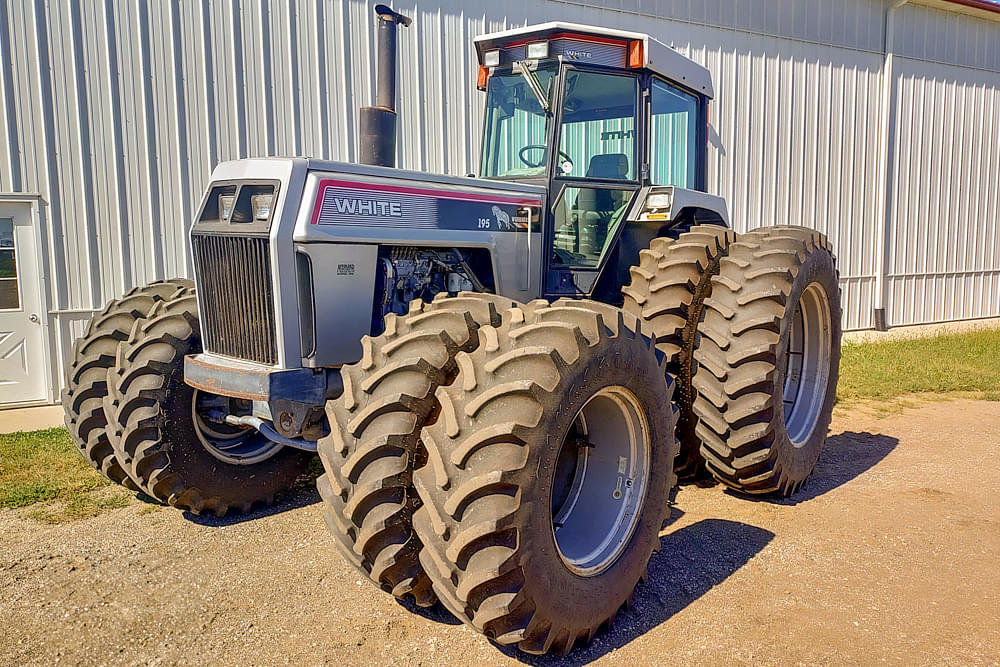
White Farm Equipment was a company that, regardless of ownership, knew its identity and its products. Using the sturdy Field Boss chassis and an old Oliver driveline and transmission, they built rugged, reliable tractors built for business. While they might not have been the flashiest, their performance was always dependable.
Their focus on gradual advances was key. From the Field Boss series to the Hundred Series and finally the Workhorse line, they made smart tweaks—like redesigned seats and door latches—and they didn’t mess with stuff that worked. Their mission was simple: build reliable tractors that got the job done at a reasonable price.
In fact, the only major change to those tractors came after Allied Products Corp. bought White Farm Equipment in 1985, merged them with New Idea (another company they owned), and moved production to Coldwater, OH. Starting in 1986, they replaced Perkins, Hercules, and Caterpillar engines with CDC Cummins powerplants for tractors over 90 horsepower. This shift to direct-injected engines provided cleaner burning and improved power-to-fuel efficiency.
Sidebar: Allied Products Corp.
I feel like we need to take a quick second to talk about exactly who Allied was, and what they did, because it’s important to this story.
See, Allied Products Corp. was a small conglomerate of shortline manufacturers. I think the biggest company they owned before purchasing White was New Idea. Allied and its family of companies was known for building loaders, choppers, and manure spreaders–not a full line of farm equipment including planters, combines, and tractors.
On paper, it looks like Allied was in way over their head, but they didn’t let it stop them. They bought White in 1985, merged them with New Idea, and promptly started churning out a full line of farm equipment like they’d been doing it that way for decades.
It wasn’t perfect–not by a long shot, but on the whole, for the six or eight years they were building tractors, before being acquired by AGCO in the early 90s, they outperformed everybody’s expectations.
Now, back to the Workhorse…
The Workhorse line launched in the 1990 model year, with the 195 at the top. In my view, it was the ultimate evolution of a proven tractor, built with tried-and-true components. Tough, comfortable, reliable, and easy to work on—that’s what made it stand out.
Could they have sold better?
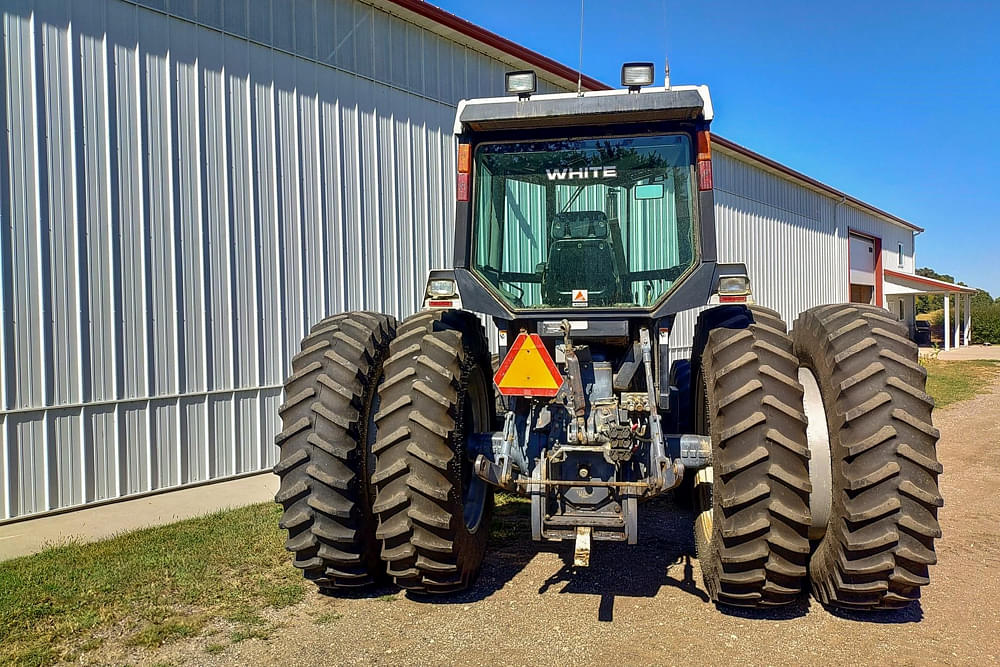
Yep, it sure could’ve. I’ve never been able to find production numbers for the tractor, but I know that Deere and Case IH outsold the White 195 by a country mile. Honestly, that shouldn’t surprise anybody though. At the end of the day, for every dollar of R&D and advertising in White’s budget, the other guys probably had more like five or even ten! They should’ve run circles around them–there’d be something wrong if they didn’t! Furthermore, I’ll bet their dealership locations outnumbered White dealers 10 or 15 to one!
Yet, for being the David in this Goliath-sized fight, Allied held their own! I mean let’s be real clear here, Allied was a conglomerate of short-line companies. Their companies built stuff like loaders, manure spreaders, and choppers. What did they know about making a go of a full-line farm equipment company? That’s a big step, but for a few years, David tango’d with the Goliaths of the farm equipment industry!
I mean, maybe that’s the real story here; not the White 195, but how a short-line company stepped up to the plate, bought a full-line farm equipment company, and figured out how to make it work!
Nah, who am I kidding? This is Interesting Iron…of course it’s about the tractor!
Speaking of which, let’s take a closer look at the White 195 at Melchert!
Knee-deep in rubber…
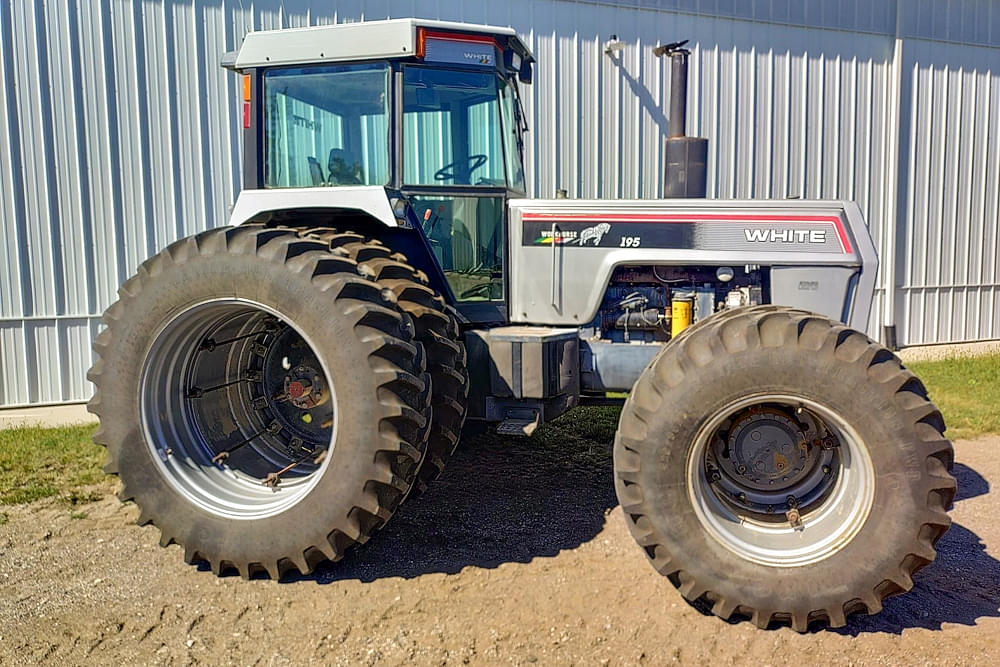
This White 195 tractor just showed up at Melchert Harvesting Equipment in Minnesota, and the duals at all four corners caught my eye immediately. I reached out to Jon Melchert to get the scoop on this tractor. Turns out, this isn’t the first 195 the Melchert brothers have owned. They once owned five of them, including two rare 2WDs! I’ve heard that only five or six of these 2WD models were ever built, but I can’t confirm that. What I can say is that there definitely weren’t many of them!
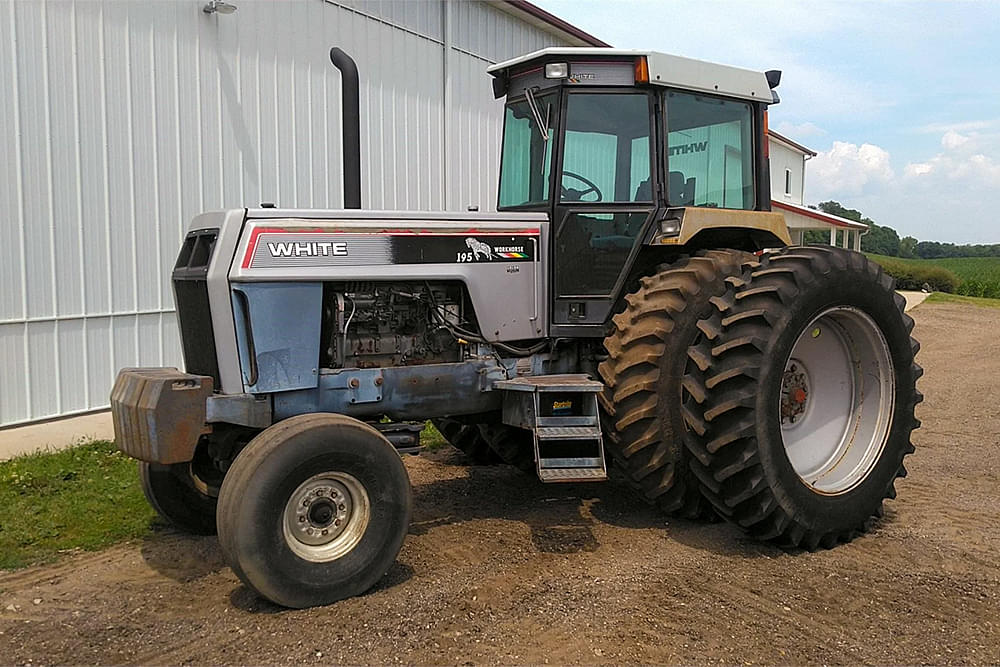
The tractor that they have listed now is a one-owner 1991 model. It was a dealer demo unit sent to Affolder Equipment Sales in Berne, IN. For years and years, they were an Allis dealer. However, Berne, IN is only about a half-hour away from the White-New Idea plant in Coldwater. When they started building tractors there, Affolder started selling them in 1987.
At any rate, this particular machine had a few demo hours on it and a local farmer bought it not long after demoing the tractor. It was his big horse and never really left the county until he retired and sold it to Jon & Danny. The best part? It’s only got 5612 hours on it. Cliche as it sounds, this tractor truly is just getting broken in!
 The original paint sure looks good on this machine! Better than a lot of Field Bosses and Hundred Series tractors out there! (Photo: Melchert Harvesting Equipment)
The original paint sure looks good on this machine! Better than a lot of Field Bosses and Hundred Series tractors out there! (Photo: Melchert Harvesting Equipment)
Outfitted nicely…
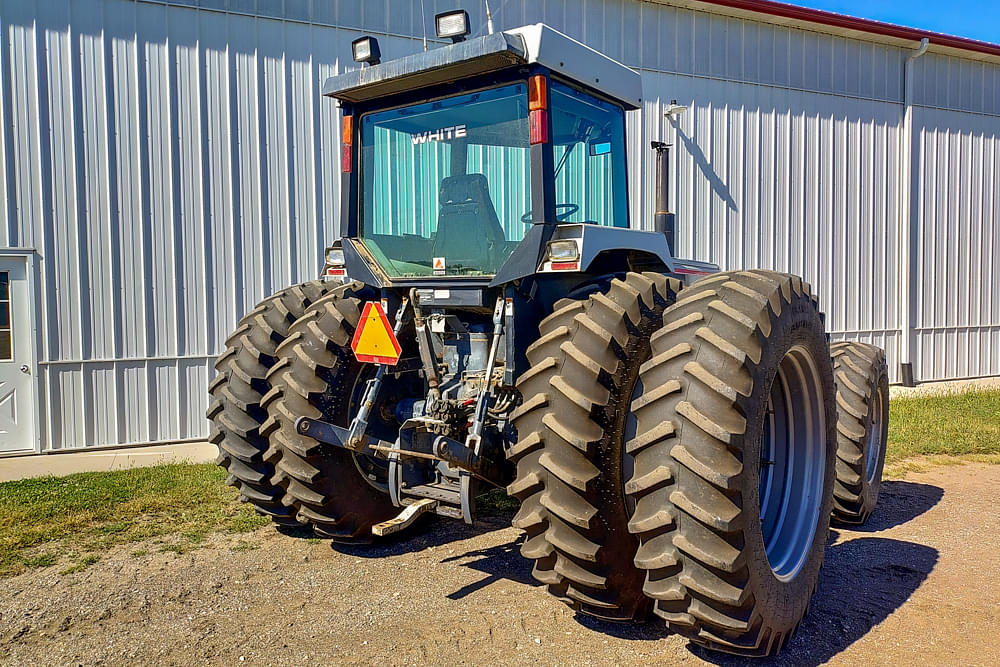
For a “standard” package, I have to say that the 195 rolled off the assembly line pretty well-equipped! Triple remotes, air ride seat, and lots of lights all the way around.
One thing it didn’t come with was duals. As I understand it, though, those were clamped on just about as soon as the tractor hit the driveway. The tractor has been that way ever since. Jon’s been all over the front end looking for signs of stress and such, and he said, “Ryan, this one is about as tight as any of ’em we’ve ever owned; I’d have never expected that, yet here we are.”
I don’t know it for sure, but I reckon those duals were more about flotation than anything else.
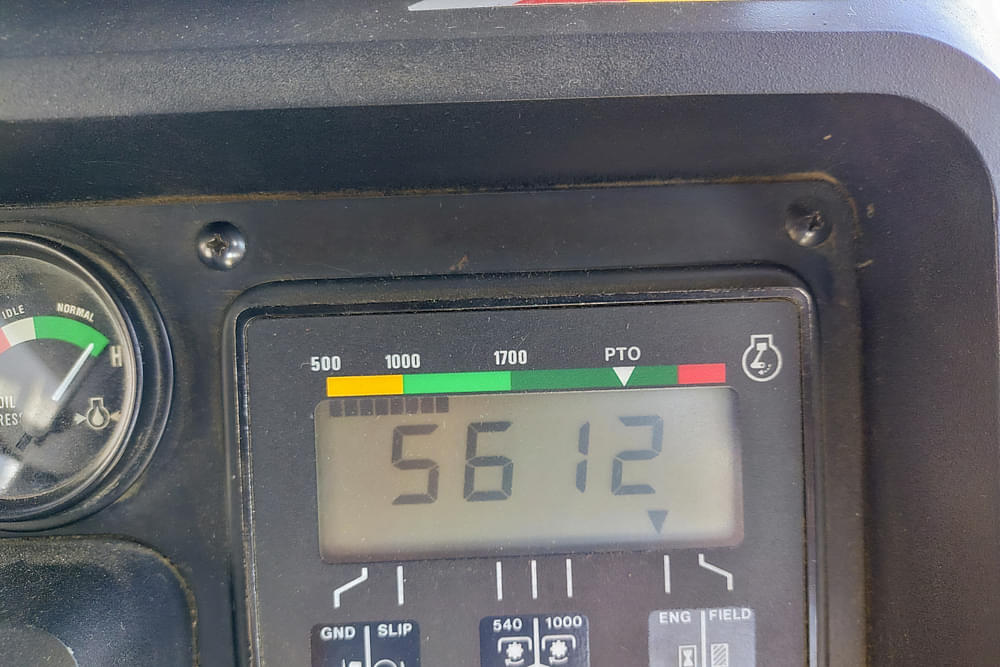
Jon told me that the farmer who owned it was pretty adamant about keeping it put away when it wasn’t being used. When Jon got to Ohio to look it over, he said you could tell that it had a permanent spot in the barn. “I don’t think this tractor’s ever spent a night outside,” he told me. Based on the photos, I’d tend to believe him!
About the only thing this tractor really needs right now is a new seat cover. The foam is fine, but the fabric has started to wear through.
Wrapping up…
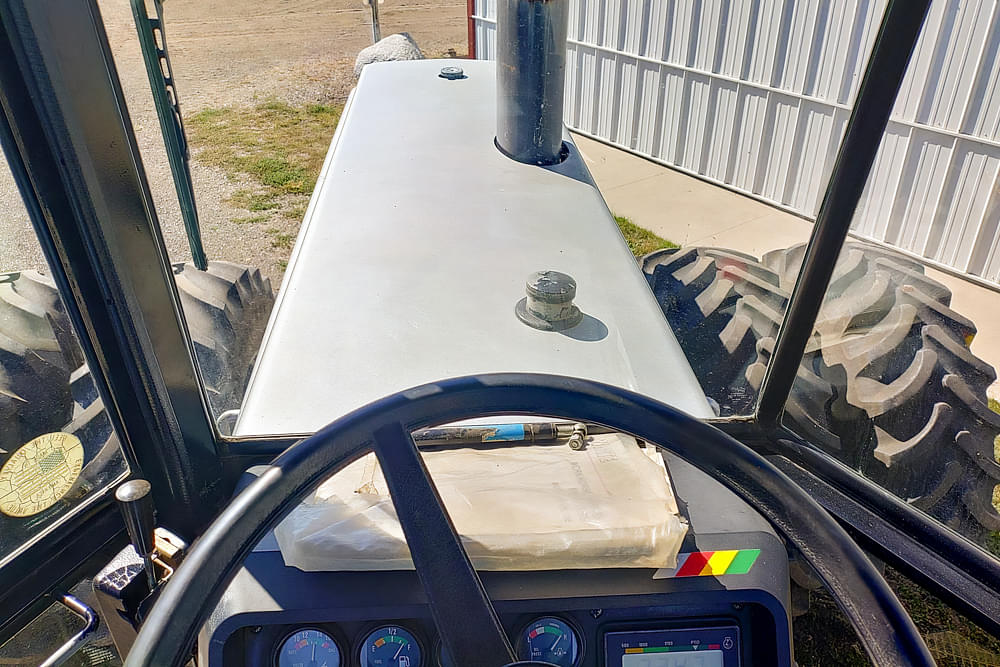
Jon & Danny are White tractor fans, and they’ve got a lot of experience with them. They’ve also bought and sold a lot of these tractors, too. As such, they’ve become members of a pretty short list of guys you call when you’re looking for one. So, when they tell me that they’ve been through the tractor inside and out, I believe it. They’ve run it in the field already (they had a 26′ disk this morning), and both of them were pretty impressed with the way it drove and operated.
Overall, this is an awfully nice tractor that absolutely will not last. It’s only been out on the internet for a day or three and Jon told me that they’ve both fielded a few phone calls on it.
So, the moral of the story is this…if you want it, you’d best act quickly, because it might be a while before there’s another one like it available!
Here’s the link one more time…
White 195 Workhorse
By the way, there’s two quick things that I want to mention here before I sign off.
- If some of what I wrote today sounds familiar, there may be a good reason. My buddy Ryan Kelly recorded a TikTok video about the White 195 and why it’s so darn good. He and I talked at some length about those tractors back then, and some of that conversation probably ended up in this article. Here’s the link to the video. (BTW, he’s a great follow on TikTok as well as YouTube!
- If I’m not mistaken, the November/December issue of Heritage Iron magazine will feature an article (no doubt much better than mine) about the White 195! If you subscribe right now, I’ll bet you can still get it as your first issue!











